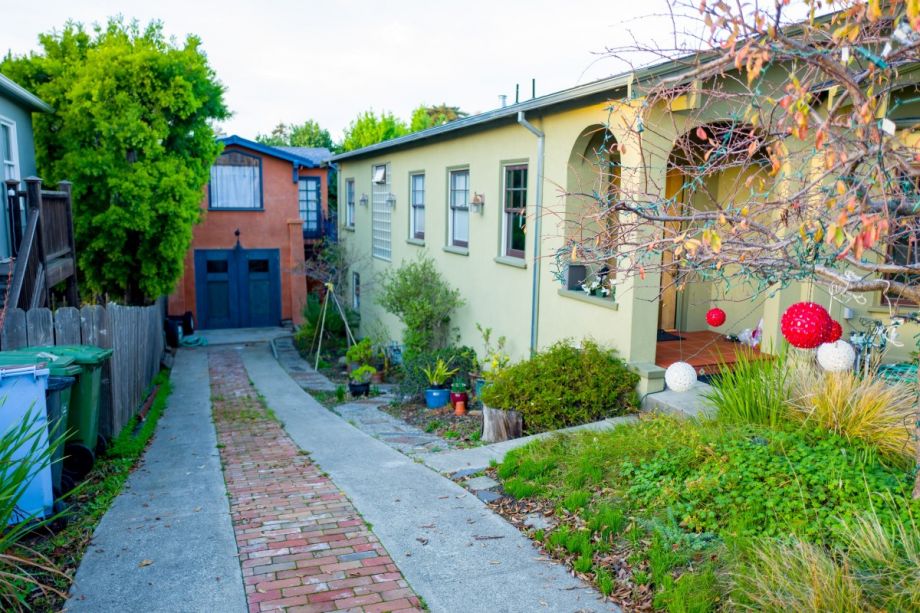| |
 Posted Feb 6, 2021, 9:39 PM
Posted Feb 6, 2021, 9:39 PM
|
 |
Registered User
|
|
Join Date: Aug 2002
Location: Toronto
Posts: 52,200
|
|
|
Edmonton Is Making Its Alleyways a Great Place to Live
Edmonton Is Making Its Alleyways a Great Place to Live
February 1, 2021
By Cailynn Klingbeil
Read More: https://nextcity.org/daily/entry/edm...-place-to-live
Quote:
.....
As part of a bold plan to build in rather than out, the city has been loosening regulations and streamlining permitting for garden suites. Its goal is to squeeze more living space into the urban landscape by slipping these apartments, also known as granny flats, laneway housing and accessory dwelling units into underutilized urban spaces. While these small-scale living spaces, often located in the backyard of a detached house, are difficult to build in many North American cities, Edmonton is clearing a path for them.
- “Edmonton is like the unassuming leader when it comes to garden suite bylaws and infill policy,” says Ashley Salvador, an urban planner and president of YEGarden Suites, an education and advocacy-based non-profit. Though the city is perhaps better known for its sprawling parking lots, Salvador says she’s seen a culture shift in Edmonton, which is developing a reputation as an unlikely pioneer of progressive urban concepts. “When we first started out [in 2017], no one knew what garden suites were,” she says. “We’d say the word and they’re like, ‘What do you mean? Is that like a shed or something? Are you gardening back there?’” — Now, though, the suites have become “pretty mainstream,” according to Salvador, with close to 400 across the city. Salvador has seen a recent uptick in interest due to the COVID-19 pandemic. “People are thinking about their families and loved ones and how to care for them into the future in a way that is resilient and can withstand these kinds of uncertain shocks,” Salvador says.
- This commitment to densification is all the more impressive when you consider that Edmonton does have room to continue sprawling outwards, says Sean Bohle, a senior planner for the city. But there are many good reasons for pulling more people into existing neighborhoods regardless. Bohle points to a 2011 report showing that Edmonton’s mature neighborhoods generally completed prior to 1970 consistently lost population in the preceding 40 years. That means fewer people utilizing the schools, roads, parks, playgrounds and other infrastructure in those communities. — “There’s definitely a fiscal responsibility element to pursuing infill development, but it isn’t purely a fiscal question,” says Bohle. “There’s environmental benefits from containing your urban growth and not expanding outwards, and there’s also a bit of an urban vitality element to it as well. The more people we have in existing areas, these people support local shops and businesses. They’re out in public, they’re in the parks, they’re using the facilities that have already been built.”
- Garden suites hold other advantages for homeowners, as well, giving them the opportunity to adapt their property for rental income, multi-generational living, or to downsize rather than move. Recognizing these benefits, Edmonton has been cutting the red tape that often constrains this type of construction. “In the past five years or so, Edmonton has made a tremendous number of changes to try to adjust our zones and our other rules… to make it work for the builders of these types of units,” Bohle says. Developers have taken note. “They’ve done a great job of easing the process,” says Daniel Engleman, co-founder of Honomobo, an Edmonton-based business that sells houses, including laneway models, made of shipping containers. — About 50 percent of Honomobo’s business is now in California, says Engleman, where accessory dwelling units have been made simpler to build across the state. But Engleman says that while it costs about $2,500 for a garden suite permit in Edmonton, fees in California add up to $30,000 to $40,000.
- Another major change saw garden suites move from a discretionary use to a permitted use, meaning if all rules of the zoning bylaw are met, a permit can’t be denied. Last summer, another barrier was removed when the city eliminated parking minimums, so garden suites no longer require a set number of parking stalls. — Perhaps the most whimsical change has been that, as more people move into alleyways, other residents are starting to see those spaces differently as places for more than just throwing their garbage and parking their cars. In recent years, businesses have started opening in at least one Edmonton back alley. A one-day pop-up art show and auction called the Secret Alley Gallery was held in 2016 in a narrow downtown laneway. And in 2019, a laneway block party was hosted in an alley with three garden suites, featuring food trucks, music, entertainment and garden suite tours. “It opened the door to people seeing [alleys] in a little bit of a different light,” says Salvador.
.....
|

__________________
ASDFGHJK
|
|
|



